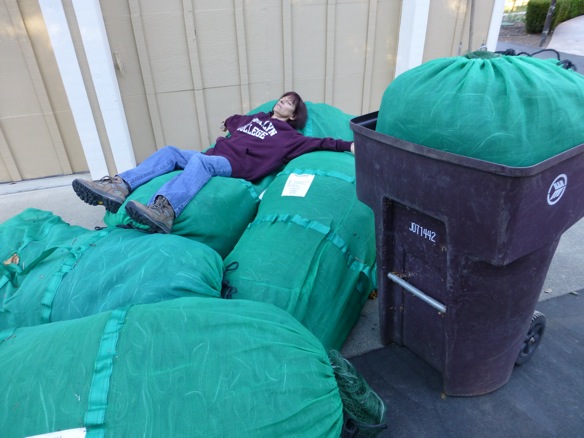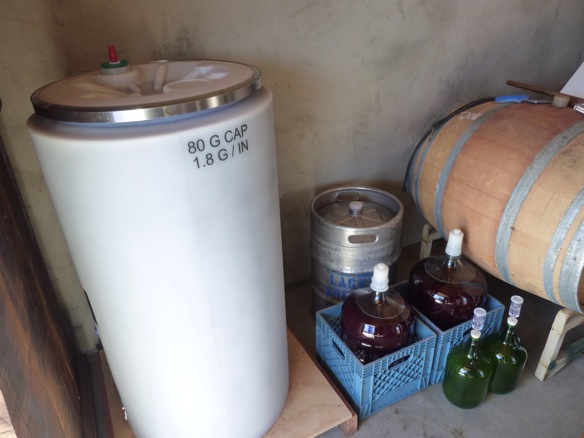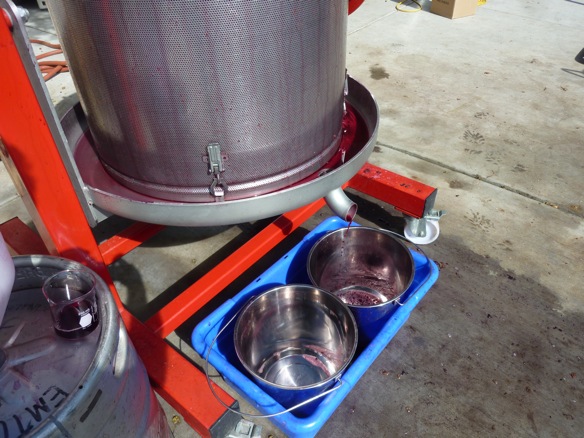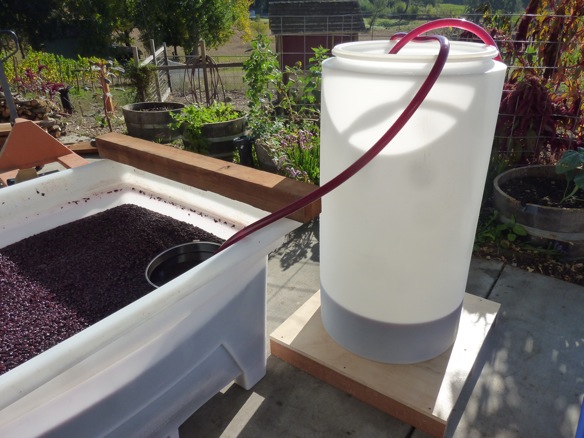 OK….so we finished the harvest and made wine….done yet. Nope, we had 3 miles of bird net that is 17 feet across to take in from the vineyard. Don’t know the official procedure, but we put the bags in a recycle bin, took off the nets from the vines, pulled them tight on the ground and then rolled the bin around and stuffed them in the bag. Each bag is about 100 pounds. Took us 24 hours! We had to finish by Sunday as it was supposed to rain Monday-Wednesday and they were on the ground and would have been full of mud. We finished, but you can see Joey was dead tired when it was over. Next year, I’m hoping to take them up the day before harvest so we can enjoy the fall colors on the leaves.
OK….so we finished the harvest and made wine….done yet. Nope, we had 3 miles of bird net that is 17 feet across to take in from the vineyard. Don’t know the official procedure, but we put the bags in a recycle bin, took off the nets from the vines, pulled them tight on the ground and then rolled the bin around and stuffed them in the bag. Each bag is about 100 pounds. Took us 24 hours! We had to finish by Sunday as it was supposed to rain Monday-Wednesday and they were on the ground and would have been full of mud. We finished, but you can see Joey was dead tired when it was over. Next year, I’m hoping to take them up the day before harvest so we can enjoy the fall colors on the leaves.
PS This next week I’m going to start pruning for next year.



